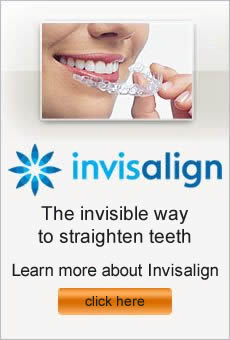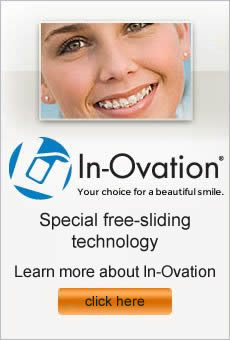Problems with the alignment of your teeth and jaw may not only bother you about how they look, but also how they function and feel. Some types of orthodontic problems can cause further issues as you age. Consulting an orthodontist for an examination and X-rays will help identify the extent of your problems, and provide recommendations on any treatment to correct the issues. Here is a description of the most common types of orthodontic problems that people face.
Teeth crowding
Crowding of your teeth occurs when your mouth isn’t big enough to fit all of your permanent teeth. This causes your teeth to grow over one another, leading to overlapping. Crowding can cause serious oral health problems because it is difficult to keep your teeth clean and healthy. Tooth decay, cavities, and gum disease are possible outcomes of crowded teeth.
Bite problems
There are various kinds of problems you can have with your bite, which is the way your upper and lower jaws come together. An overbite means that your top teeth cover a large portion of your bottom teeth. An underbite means that your lower jaw has outgrown your upper jaw, causing your bottom teeth to stick out over your top teeth. There’s also a crossbite, which indicates your front or back top teeth fit inside your lower teeth. Overjet is another type of bite problem in which your bottom teeth don’t extend far enough or your upper teeth extend too far, causing your teeth to look protruded. These various bite issues can lead to problems with eating, speech, and tooth wear.
Spacing issues
If you are missing any teeth or have a dental arch that isn’t the right size, you may have spacing issues in your mouth. Incorrect spacing can cause your teeth to shift into the wrong locations, requiring orthodontic treatment.
Dr. Fotovat is an Orthodontist in Sherman Oaks, CA
When it’s time to talk about braces for your child’s teeth, many kids cringe and cause a fuss. They don’t want to be teased for a mouth full of metal, deal with unsightly food getting stuck in their teeth, and spend years with an embarrassing smile. Now there’s an alternative to traditional braces called Invisalign, which eliminates many of the reasons kids reject the idea of getting braces. Here are some of the main reasons that Invisalign should be an easy sell to your kids.
Invisible
The best advantage to Invisalign is that you can’t see it on your teeth. The clear plastic trays fit securely over the teeth, and are virtually invisible. Many people don’t even notice you are wearing Invisalign, which means no mocking from other kids or reluctance to smile.
Removable
You can take the Invisalign trays in and out of your mouth as desired. You’ll be able to clean your mouth just as you would without braces, so that it’s not only an easy process but also you have less risk for tooth decay or other problems related to poor hygiene.
No diet restrictions
Kids are especially thrilled with the fact that there are no limitations placed on their diets due to braces. Traditional braces restrict foods like popcorn, candy, and gum. Invisalign treatment allows you to eat as you normally would, so there’s less complaining from your kids during the treatment process.
Effective
Before you think that all these benefits mean that you’re giving up on the quality of orthodontic work, you can rest easy. Invisalign treatment effectively corrects alignment and straightening issues, and almost always in less time than traditional braces treatment requires. With Invisalign, the parents and the child are happy both during the treatment process and at the final outcome.
Invisalign dentist in Sherman Oaks, CA
If you wear braces, you already know that keeping them clean can be tricky. The brackets, wires, rubber bands, and other appliances accumulate food debris and plaque buildup. If not cleaned properly, your teeth may become stained and begin to decay. That’s why it’s so important to focus on good oral care while wearing braces. Here are some tips about how to maintain a sparkling clean mouth at the same time you are straightening your smile.
Strive to brush your teeth after every meal or snack. It’s sometimes not possible, but make this your goal. Use fluoride toothpaste and spend enough time to get your braces clean. Try these techniques:
- Use a soft toothbrush to brush down from the top and then up from the bottom on every tooth.
- Then switch to a proxabrush, which is designed for cleaning between braces. It is shaped like a tiny Christmas tree. Insert the brush down from the top of the braces between each tooth, and then up from the bottom as well. Do this several times in each direction before going to the next space between your braces.
- Floss by feeding one end of the floss through the space between the arch wire and the top of the tooth near your gum. Gently floss on each side of the teeth, but don’t use too much force around the wires. Also, ask your orthodontist about floss threaders to help you insert the floss into your braces.
- Consider using a fluoride mouthwash to access areas your toothbrush misses.
- Don’t forget to clean your retainer if you have one. Brush it at the same time you brush your teeth, and disinfect it once a week by soaking it in a denture cleanser.
While wearing braces, be sure to follow your orthodontist’s instructions about safe foods to eat. Some foods should be avoided such as chewy foods like caramel, corn on the cob, foods hard to bite into like bagels, and hard items like popcorn and nuts. Also, do not chew bubble gum or ice. Foods like these can break or loosen your braces.
Dr. Fotovat is an Orthodontist in Sherman Oaks CA offering braces.
Do you wake up feeling just as tired as when you went to sleep? If so, you are not alone. Approximately 12 to 20 million Americans suffer from some degree of sleep apnea, a serious health condition that impacts your overall well being. Snoring is often a symptom of this problem, but many people don’t take that sign seriously enough.
What is sleep apnea?
Characterized by frequent lapses in breathing throughout the night that last for 10-20 seconds each time, sleep apnea occurs in two forms, obstructive sleep apnea (OSA) or central sleep apnea. Obstructive sleep apnea (OSA) is caused by airway blockage. With OSA, the soft tissues in your throat relax too much and collapse, which cuts off your air supply. Central sleep apnea happens when the brain forgets to send the right signals to the muscles that control breathing.
What are the symptoms of sleep apnea?
Signs of OSA may include loud snoring, headaches, confusion, mood swings, difficulty concentrating, and decreased energy.
Can sleep apnea impact my daily life?
Not only will you feel exhausted, but sleep apnea can affect your ability to function. Often, people with sleep apnea experience daytime grogginess, irritability, and memory issues. As well, sleep apnea can increase your risk for certain medical conditions such as weight gain, gastroesophageal reflux disease, and heart-related problems like hypertension.
What treatment is available?
After you undergo a thorough evaluation to confirm sleep apnea, your doctor can recommend therapy to address the problem. The most common treatment is a continuous positive airway pressure (CPAP) machine, which regulates breathing while you sleep. Many individuals don’t respond well to CPAP machines, finding them bulky or uncomfortable. As an alternative, your orthodontist can fit you for a night guard, an oral appliance that keeps your airways open during sleep.
If you need braces to straighten your teeth or adjust your jaw alignment, there are several types of braces that you can select for orthodontic treatment. Talk with your orthodontist about which kind is right for you, but here is a general description of the types available and the differences between them.
Traditional
Made from quality stainless steel, metal braces have traditionally been the most common option for braces. They have a proven track record of successful orthodontic treatment, but some people aren’t thrilled about the noticeable appearance of metal in their smiles. Small brackets are bonded onto the fronts of the teeth and joined together with a wire, and sometimes colorful elastics may be worn.
Ceramic
Made of clear ceramic, these braces are especially popular among older youth and adults because they are less visible. The braces blend with tooth enamel. However, ceramic braces are more likely to break. Manufacturers are making the brackets thicker in an effort to decrease the chances of breaking during wear.
Gold-plated
Similar to metal braces, these are also made of stainless steel but are covered in gold. Some patients find the look of gold to be more appealing than silver. Surprisingly, the cost of gold-plated braces is comparable to most clear braces.
Invisalign
The biggest benefit of Invisalign braces is that they are practically invisible. Clear plastic aligners are worn to gradually move teeth into better position, and they are removable so oral hygiene techniques remain the same as without braces.
Incognito
Fitted onto the back of the teeth so that they are completely hidden from view, incognito braces offer another option for patients not wanting their braces to be noticed. These braces are trickier to adjust and clean, can affect speech, and are often more expensive than other braces.
Braces orthodontist in Sherman Oaks CA
Once you’ve gone to the time and expense of having orthodontic treatment, the last thing you want to do is have it all for nothing! That’s why you should follow your orthodontist’s instructions for wearing your retainers, which are used to prevent your teeth from moving back to their previous positions after your orthodontic appliances have been removed.
What are retainers?
Retainers hold our teeth in place while they settle into their ultimate position. Most patients are required to wear both upper and lower retainers. Upper retainers are made of hard plastic and wire, fit into the roof of your mouth, and are removable. Lower retainers consist of wire, and may be removable or glued permanently to the lower teeth.
How much should I wear them?
Retainers are usually worn full time for the first several months, except while eating. Eventually you will only wear the retainer while sleeping, and often you’ll complete wearing your retainer within one year if you stick to your orthodontist’s recommendations.
How do I care for my retainer?
Retainers fit directly against your teeth, so a clean retainer helps with clean teeth and better breath. When you brush your teeth, you should also brush your retainer. Rinse it with water and then replace it into your mouth. Once it’s in place, try not to flip the device with your tongue because that often leads to a broken retainer.
What if I take my retainer out?
Except during cleaning, the best place for your retainer is in your mouth. It’s usually a hassle to get them replaced, so it’s important to take care of your retainers. Follow these tips:
• Don’t wrap your retainers in a napkin, because they can be easily thrown away.
• Don’t put your retainers in your pocket or loose in your purse, because they may be broken.
• Don’t leave your retainers sitting around for children or pets to access.
Orthodontist for fixing retainers in Sherman Oaks CA



